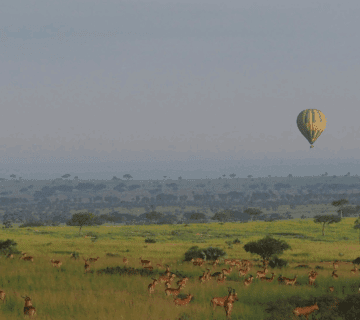Uganda Adventure Activities – Beyond Safaris: Discover the Thrill of the Pearl of Africa
When people think of Uganda, the first thing that comes to mind is often its incredible wildlife safaris. The country is renowned for gorilla trekking in Bwindi Impenetrable Forest, lion sightings in Queen Elizabeth National Park, and the majestic tree-climbing lions of Ishasha. However, Uganda Adventure Activities – Beyond Safaris offer an exhilarating world of adrenaline-pumping experiences that many travelers have yet to discover.
From white-water rafting on the Nile to hiking the snow-capped Rwenzori Mountains, Uganda is a paradise for thrill-seekers. If you’re looking to push your limits, immerse yourself in nature, and create unforgettable memories, this guide will take you through the best adventure activities Uganda has to offer—beyond the traditional safari.
1. White-Water Rafting on the Nile – A Heart-Pounding Rush
One of the most thrilling Uganda Adventure Activities – Beyond Safaris is white-water rafting on the mighty Nile River in Jinja. Known as the adventure capital of East Africa, Jinja offers some of the best rapids in the world, ranging from Grade 3 to Grade 5.
Why You Should Try It:
-
Unmatched Rapids: The Nile’s rapids, such as The Bad Place and Silverback, provide an adrenaline rush like no other.
-
Stunning Scenery: As you navigate the rapids, you’ll be surrounded by lush greenery and occasional wildlife sightings.
-
Safe & Professional: Experienced guides ensure safety while keeping the adventure exciting.
Whether you’re a beginner or an expert, rafting in Jinja is a must-do for adventure lovers.
2. Bungee Jumping Over the Nile – Take the Ultimate Leap
For those who crave an instant adrenaline surge, bungee jumping over the Nile River is an unforgettable experience. Standing on a 44-meter-high platform, you’ll take a leap of faith into the abyss, with the roaring Nile beneath you.
Why You Should Try It:
-
Sheer Thrill: The freefall lasts only seconds, but the rush is indescribable.
-
Spectacular Views: As you bounce back up, you’ll see the vast Nile stretching into the horizon.
-
Conquer Your Fears: There’s no better way to challenge yourself than by taking this daring plunge.
This is one of the most iconic Uganda Adventure Activities – Beyond Safaris, perfect for thrill-seekers.
3. Hiking the Rwenzori Mountains – The Mystical “Mountains of the Moon”
For trekkers and mountaineers, the Rwenzori Mountains offer a challenging yet rewarding adventure. Known as the Mountains of the Moon, this UNESCO World Heritage Site features glaciers, alpine meadows, and unique vegetation.
Why You Should Try It:
-
Technical Climbing: Unlike Kilimanjaro or Mount Kenya, the Rwenzoris require proper mountaineering skills.
-
Unique Ecosystem: The mountains host rare plants like giant lobelias and groundsels.
-
Less Crowded: Fewer tourists mean a more serene and immersive experience.
Summiting Margherita Peak (5,109m) is a lifetime achievement for any adventurer.
4. Mountain Biking in the Wild – Explore Uganda’s Rugged Trails
Mountain biking is one of the most exciting Uganda Adventure Activities – Beyond Safaris, offering a mix of rugged terrain, scenic landscapes, and cultural encounters. Popular spots include:
-
Lake Mburo National Park: Bike alongside zebras, impalas, and buffaloes.
-
Sipi Falls: Ride through coffee plantations with stunning waterfall views.
-
Kidepo Valley National Park: Remote trails with breathtaking wilderness.
Why You Should Try It:
-
Eco-Friendly Adventure: Cycling minimizes environmental impact.
-
Close to Wildlife: Unlike vehicles, bikes allow a quieter, more intimate wildlife experience.
-
Great for Fitness: A fun way to stay active while exploring.
5. Kayaking and Stand-Up Paddleboarding – Serene Yet Adventurous
If you prefer water-based adventures, kayaking and stand-up paddleboarding (SUP) on the Nile or Lake Bunyonyi provide both excitement and tranquility.
Why You Should Try It:
-
Kayaking: Navigate gentle or wild rapids, depending on your skill level.
-
SUP on Lake Bunyonyi: Glide across Africa’s second-deepest lake, surrounded by terraced hills.
-
Sunset Paddles: A magical way to end an adventurous day.
6. Zip-lining Through the Jungle – A Bird’s-Eye View of Uganda
For a unique perspective of Uganda’s forests, try zip-lining in Mabira Forest or at Nile High Camp in Jinja. Soaring above the treetops, you’ll feel like you’re flying.
Why You Should Try It:
-
Speed & Height: Some lines reach up to 80km/h and 50 meters high.
-
Lush Surroundings: The dense forest canopy below is a breathtaking sight.
-
Family-Friendly: Safe for kids and adults alike.
7. Rock Climbing in Kariandusi and Sipi – Conquer New Heights
Uganda’s rock climbing spots, such as Kariandusi near Lake Elmenteita and Sipi Falls, offer thrilling vertical challenges.
Why You Should Try It:
-
Varied Difficulty Levels: From beginner-friendly to expert climbs.
-
Stunning Backdrops: Clifftop views of waterfalls and valleys.
-
Great for All Ages: A fun way to build strength and confidence.
8. Quad Biking in Jinja – Off-Road Excitement
For those who love speed and dirt tracks, quad biking through Jinja’s countryside is an exhilarating experience.
Why You Should Try It:
-
Mud-Splashing Fun: Ride through villages, forests, and along the Nile.
-
Cultural Stops: Interact with local communities along the way.
-
Sunset Rides: A thrilling way to end the day.
9. Horseback Riding in Lake Mburo – A Unique Safari Experience
While safaris are usually done in vehicles, horseback riding in Lake Mburo National Park offers a more intimate wildlife encounter.
Why You Should Try It:
-
Silent Approach: Animals are less startled by horses than by cars.
-
Up-Close Encounters: Ride alongside zebras, giraffes, and antelopes.
-
Romantic & Peaceful: A slower, more immersive way to experience nature.
10. Caving in the Batwa Pygmy Trails – Underground Adventures
Explore the mystical caves of the Batwa Pygmy people near Mgahinga Gorilla National Park.
Why You Should Try It:
-
Cultural Insight: Learn about the Batwa’s ancient way of life.
-
Spelunking Thrills: Crawl through dark, narrow passages.
-
Unique Experience: Few tourists venture into these caves.
Why Uganda is the Ultimate Adventure Destination
Uganda Adventure Activities – Beyond Safaris prove that this country is more than just wildlife. It’s a playground for adrenaline junkies, nature lovers, and culture seekers. Whether you’re rafting the Nile, hiking the Rwenzoris, or biking through savannahs, Uganda offers endless opportunities for excitement.
So, step out of your comfort zone and embrace the thrill of the Pearl of Africa. The adventures you’ll have here will not only challenge you but also leave you with stories to tell for a lifetime.
Are you ready to go beyond the safari and experience Uganda’s wild side? The adventure awaits!




